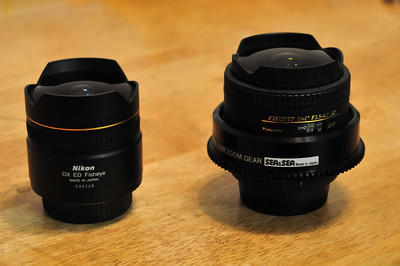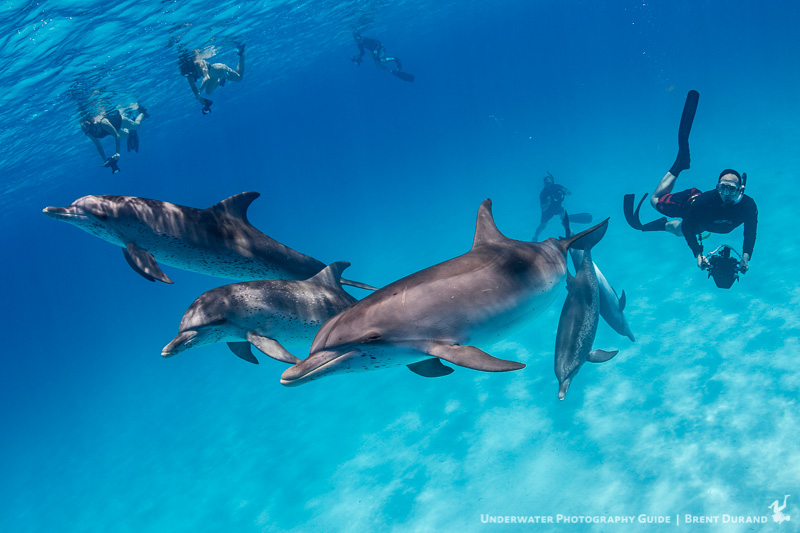
When I first owned a compact camera and started looking at dSLRs, I started to see many confusing terms about lenses. What was focal length? What does 18-55mm mean? What is a zoom and telephoto lens? Angle of view? Focal Length? I did not understand these photography terms. I didn’t understand lens basics.
Here I’m going to try to explain some of this terminology in non-technical terms.
Cameras – compacts and dSLRs
Compact cameras are also called point-and-shoot. They are the small cameras that cost less. You can’t change the lens, the lens is built in. A dSLR is the larger camera that pros and serious amateurs use. They cost more and you must buy a camera body, and one or more lenses. They often come with an inexpensive lens called a kit lens. You can also pick up a dSLR, point, and shoot, so I’m not really sure why compact cameras are also called point and shoots. But they are.
Lenses & Lens Basics
Lets start with lenses. All cameras have a lens. Compact camera have lenses built in, where dSLR (digital single lens reflex) camera allow you to change lenses.
If you’re familiar with lens basics and looking for specific underwater info, read more about the: Best lenses for underwater photography.
Prime and Zoom lenses
There are two types of lenses, prime lenses and zoom lenses. Zoom lenses allow you to either rotate a lens, pull a lens forward and back, or press a button to “zoom in” on an object. If you’ve never held a camera and zoomed in and out, now is the time to try it. Go ahead, we’ll wait.
Ok, now you understand zoom lenses. When the object you are looking at gets larger, that’s called “zooming in”. When it gets smaller, that’s called “zooming out”.
A 20mm, 60mm, and 100mm lens are all examples of prime lenses. A lens with 2 numbers, like a 18-55mm lens, is a zoom lens. The smaller number is the wide end of the zoom range, and the larger number is the telephoto end (zooming in, like you are taking a photo of a small bird or something far away).
All compact cameras have zoom lenses. If you have a dSLR, you might get a prime lens, which means it can’t zoom in or out, it always has the same view when you look through the lens.
Wide Angle and Telephoto lenses
Lenses that allow you to take a photo of a wide area, such an entire room of people, or a large coral reef, are called wide-angle lenses. Lenses that let you take photos of subjects far away, like small birds, are called telephoto lenses. These lenses can be prime lenses or zoom lenses.
The human eye is neither wide angle nor telephoto. It’s in the middle. Most compact cameras are similar, they aren’t very wide, and if you zoom in you can take a photo of something farther away, but not really small things. There are some exceptions, some compact cameras come with a 5x or 10x zoom that is good for bird photography, but a 3x zoom is normal. That means when you zoom in, the object will become three times larger. Some compact cameras also are coming out with wider lenses, but I hesitate to call these true wide-angle lenses.
A lens that is in-between wide angle and telephoto is often called a mid-range lens.
Wide angle and fisheye lenses
There are two types of wide-angle lenses, regular lenses, known as rectilinear wide-angle lenses, and fisheye lenses. Photos taken with fisheye lenses look curved at the edges. Fisheye lenses are wider than regular wide-angle lenses. For example, 15mm fisheye lens is wider than a 15mm rectilinear lens. Read more about the differences between fisheye lenses and regular wide-angle lenses.
Macro lenses
Macro lenses allow you to take a photo of a subject very close up. Calling a lens a macro lens doesn’t have anything to do with whether it is wide-angle or telephoto. It just means you can get very close to small objects and photograph them. You really never have macro lenses that are wide-angle. Macro lenses tend to be either in between wide-angle and telephoto, or moderately telephoto. Common macro lenses are the olympus 50mm, nikon 60mm, nikon 105mm, sigma 150mm, canon 60mm, and canon 100mm. Read more about underwater macro lenses.
Mid-range Zooms
A lens with a focal-length between 17mm and 60mm is called a “mid-range zoom” lens. Examples include a 17-35mm lens, 17-70mm lens, and a 18-55mm lens. These lenses are great for photographing marine life such as large fish, large eels, turtles, skittish sharks, napolean wrasses pelagics, and getting close-up shots of schools of fish. There are not great at “true” wide-angle shots, and not great at close-up macro shots.
Compact cameras and “add on” lenses.
If you own a dSLR, you can change lenses to get wide-angle, telephoto, or macro abilitites. You can’t change the lens of your compact camera. However, they do sell add-on lenses that can give your camera wide-angle, telephoto or macro abilities. These lenses are sometimes called converter lenses. In the underwater world, we call them “add on” lenses, or “wet lenses”. Underwater you only want to give your camera wide-angle or macro capability. Shooting subjects from far away underwater is not a good idea, so underwater photographers have no interest in adding telephoto capability. Read more about wet lenses underwater.
Comparing lenses on Mirrorless cameras, cropped-sensor dSLRs, or full-frame dSLR’s
Wide-angle focal lengths are used for shooting divers, sharks, whales, manta rays, schools of fish up-close, or coral reefs. Mid-range focal lengths are for larger fish, marine life portraits, etc. Macro/telephoto lenses are for smaller fish, intimate portraits, nudibranchs, macro shots, etc.
Mirrorless cameras:
-
Wide-angle: 7mm – 11mm
-
Mid-range zoom: 12mm – 44mm
-
Macro / telephoto: 45mm and greater! Usually 45mm – 75mm underwater
Cropped-sensor dSLRs:
-
Wide-angle: 10mm – 15mm
-
Mid-range zoom: 16mm – 59mm
-
Macro / telephoto: 60mm and greater! Usually 60mm – 150mm underwater
Full-frame dSLRs::
-
Wide-angle: 14mm – 22mm
-
Mid-range zoom: 23mm – 59mm
-
Macro / telephoto: 60mm and greater! Usually 60mm – 150mm underwater
Focal Length
Ok, now we come to a very important part of lens basics – focal length. A focal length is a property of a lens, expressed in millimeters. Wide-angle lenses have small focal lengths, such as 10mm or 20mm. The smaller the number, the wider the lens. Telephoto lenses have large focal length. such as 200mm or 300mm. If you want to take a photo of a bird really far away, and you had a choice between a 200mm lens and a 300mm lens, you would want the 300mm lens.
Zoom lenses and compact cameras can zoom in and out. We say that it has a range of focal lengths. Here are some examples of zoom lenses – a 35-105mm lens. The smaller number always comes first. The smaller number represents the widest focal length of the lens, in this case 35mm. the larger number, 105mm, represents the focal length when you “zoom in” on a subject. 35mm times three = 105mm, therefore this is called a 3x zoom. When you zoom in on an object, it will get 3 times larger in the camera.
Prime lenses only have one focal length, for example, a 60mm lens is a prime lens.
Examples of focal lengths
Small focal lengths such as 10mm or 15mm represent a very wide view, such as taking a photo of a large room. Focal lengths such as 300mm or 400mm would be a large, heavy telephoto lens for taking photos of birds or airplanes. Just remember – a small number is wide, a large number is telephoto. Two numbers together, e.g. 35-105mm, means that the lens zooms from one focal length to another.
Comparing lenses between cameras
To make matters more complicated, a 35mm lens on one camera might look different on another camera. It’s like comparing apples and oranges. To compare lenses between cameras, we often convert focal lengths to “35mm equivalents”. 35mm refers to the size of a sensor on a film camera, but you don’t really need to worry about that now. I’m going to tell you everything you need to know about focal lengths and 35mm equivalents.
Focal length on a compact camera: camera specs will usually give a 35mm equivalent for your camera. Some cameras with a 3x zoom will have a focal length of 35-105mm. Some compact cameras, like the canon G10, are a little wide. The focal length of the G10 is 28-140mm, so it’s a little wider than other compacts. 140/28 = 5, so the lens is a 5x zoom.
Focal length on a dSLR: Most dSLR’s you’ll come in contact with, like the Olympus E3, Canon 50D, and Nikon D300 are called cropped sensor dSLRS. The nikon d3 and Canon 5d are called full-frame dSLRs. To compare the focal length of a lens on a cropped sensor dSLR with a compact camera, you must first convert to 35mm equivalent. To do that, you multiply by the crop factor. If it’s an Olympus camera multiple by 2.0, if it is a Canon multiply by 1.6 (usually), if it’s a Nikon multiply by 1.5. You can read more about sensor sizes and cameras.
Working Distance and Minimum focusing distance
The working distance of a lens is how close it will focus, measured from the front of the lens. The minimum focusing distance is how close it will focus, measured from the sensor plane. So the minimum focusing distance will always be a little larger than the working distance.
Maximum Magnification
Related to the focusing distance is the maximum magnification of a lens. 1:1 magnification means a lens can take a photo the size of the camera’s sensor. 1:5 magnification means it can take a photo 5 times the size of the sensor, which is less magnification obviously than 1:1. For a Nikon D300, the sensor is 23.6mm across, so a lens with 1:1 magnification can take a full-frame photo of something 23.6mm across, where a 1:5 max magnification lens can only full-frame a subject 11.8cm across. Most macro lenses can do 1:1 or 1:2 magnification.
To achieve 1:1 magnification, if your macro lens is capable of it, simply focus as close as possible to your subject. Try testing the macro capability of your lens with a ruler.
Field of View, or Angle of view
Field of view (FOV), also known as Angle of view shows how wide a lens is, and is expressed in degrees. A 10mm fisheye lens will have a very wide field of view, e.g. 180 degrees, where a long telephoto lens will have a very narrow field of view, e.g. 10 degrees. The FOV, or angle of view, is often stated as a diagonal measurement, from one corner of the frame to the other. In addition, it is important to know whether the FOV is for a full-frame camera or a cropped-sensor camera, because the same lens on a cropped-sensor camear will have a smaller FOV.
Lens speed and largest aperture
A very important property of a lens is its speed. A lens with a large maximum aperture is called a “fast lens”. Examples are 50mm F1.8, 17-35mm F2.8, 200mm F2.0. Lenses with a large maximum aperture let in more light, focus faster, are sharper, larger, and more expensive. They also make it easier to blur the background by using a large aperture for less depth of field. These lenses are especially useful for indoor and low-light photography.
A lens with a small maximum aperture is called a slow lens. Examples are 300mm F5.6, 18-200mm F3.5-F5.6, 200-500mm F4.5-F6.3. Slow lens are less expensive, less sharp, slower to auto-focus and weight less. Because you must shoot at smaller apertures, slower shutter speeds must be used.
The exception to these rules is the 50mm F1.8 lens. This fast lens is not heavy or expensive, but it is very sharp, and is often one of the first lenses a pro photographer will purchase.
Ok – that’s enough of camera lens basics for now. If that’s not enough please take a photography class or grab a book from the bookstore. I recommend you get a good understanding of exposure, shutter speed, and aperture – you can get all that in the underwater settings chapter.
Related Material
Further Reading

















